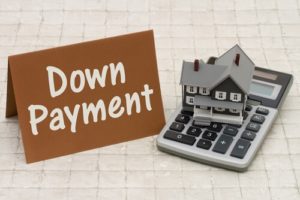 The housing market in Austin has been very strong over the last year. Austin’s average home sold price is currently around $533,000, this is down just a bit year over year. However, Austin is still one of the highest in the nation, beating out many locations in California and Florida.
The housing market in Austin has been very strong over the last year. Austin’s average home sold price is currently around $533,000, this is down just a bit year over year. However, Austin is still one of the highest in the nation, beating out many locations in California and Florida.
Austin offers a lot to families looking for a new home, including numerous parks, excellent schools and artistic venues. The city offers something to everyone in terms of lifestyle and convenience.
Based on the average home values, the majority of buyers will likely use conventional or FHA financing. But what about buyers in more expensive locations downtown or in neighborhoods like Barton Creek, Rosedale, or Rollingwood where many of the properties exceed $1m+
With these higher home prices, comes the increased need for higher Jumbo loan amounts. But what exactly is considered a “Jumbo” mortgage? This is basically any loan amount that exceeds the standard conforming loan limit, these are referred to as “jumbo” loans and have their own unique standards lenders must follow.
Loans that are considered conforming are those underwritten to guidelines issued by Fannie Mae and Freddie Mac and do not exceed loan limits established by both agencies. The 2024 conforming loan limit in Travis County and all of Texas is currently $766,550 for a single 1-unit property. This is an increase of just over $40,000 from last year.
Perhaps the most noticeable difference between a conforming and a jumbo loan is the interest rate. Rates for jumbo loans will typically be a little higher than those reserved for conforming loans. In addition, jumbo loans can ask for a greater down payment compared to the minimum down payment of 3% with conforming loan programs.
Most jumbo loans ask for at least a 20% down payment depending on the bank, broker, or lender. If you consider a home listed in Austin for $1.5 million, a 20% down payment equals $300,000. There are even jumbo lenders who ask for a down payment of 25% or even more depending on how the loan amount.
However, there are new programs in 2024 that do not require a 20% down payment. Some jumbo programs are now available with only a 10% or even a 5% down payment if the borrower’s loan amount is below $2.0m. For example, let’s say a home is listed at $1 million and the buyers want to make a 10% down payment and not 20%. The lender will approve two loans simultaneously, a first mortgage and a second mortgage. This is commonly known as a “piggyback” 80/10/10 loan structure.
The first mortgage will typically be issued at the conforming loan limit. Keeping the primary first mortgage at the conforming loan limit will eliminate the need for monthly mortgage insurance PMI. This will also ensure the home buyer can take advantage of the lower conventional loan interest rates on their primary first mortgage. The lender will also issue a second mortgage for the difference of up to 90% loan to value, so the buyers will come to the closing table with a 10% down payment in addition to the funds needed for closing costs.
 There are also similar products where the buyers put down 5% resulting in an 80-15-5 scenario. It’s not surprising that the lower the down payment, the higher the interest rates can be. Lenders do this to offset the additional risk associated with the loan. However, your loan officer can run the numbers in just a few minutes to help you decide what option works best.
There are also similar products where the buyers put down 5% resulting in an 80-15-5 scenario. It’s not surprising that the lower the down payment, the higher the interest rates can be. Lenders do this to offset the additional risk associated with the loan. However, your loan officer can run the numbers in just a few minutes to help you decide what option works best.
When buyers make a down payment on a home that amount is their initial equity but is not necessarily very liquid. When a down payment is made the only way to turn that equity into cash is through a sale or an equity loan. This is why many buyers who finance a high-end home in Austin often elect to hold onto their liquid assets as much as possible and leverage today’s low mortgage rates with two mortgage loans.
Such a scenario will ask the borrowers to occupy the property being financed. If the buyers want to buy an investment rental home, the 80-15-5 program may not be an option as this is only available for primary or second homes. Minimum credit scores apply as well with lenders asking for a minimum credit score of 700. Learn more about all the Jumbo Purchase guidelines here.
There are more options than you might imagine when seeking jumbo financing and there can be more competitive programs than you might think. If you’re buying a luxury home, you should first talk numbers with us.
We are happy to serve home buyers throughout Texas. Please connect with us 7 days a week at 800-962-0677 – or just submit the Quick Contact Form found on this page for rapid service.